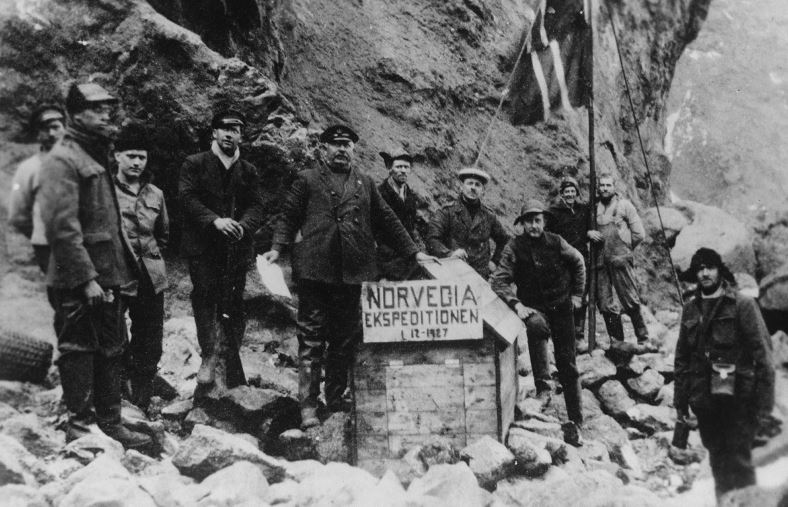This post is also available in:
![]() Deutsch
Deutsch
In the South Atlantic Ocean there is a small volcanic island, almost entirely covered by ice: The island of Bouvet. This island is located approximately 2,500 km southwest of Southern Africa. At 4,200 east of Cape Horn, the extreme strip of South America. And about 1,800 km north of Antarctica. The equally remote island of South Georgia is located about 2,500 km west of Bouvet.
ISLAND DISCOVERED BY THE FRENCH
This island, which has an area of almost 50 square kilometers, was discovered on January 1, 1739, by a French naval expedition that was in search of the great southern continent. In command of the two ships that discovered the island was Jean-Baptiste Charles Bouvet de Lozier, an explorer originally from Brittany who was at the time in the service of the French East India Company (Compagnie française des Indes orientales). Bouvet de Lozier, later, in his career in the service of the French Company became (1750-1752 and 1757-1763) governor of the Mascarene Islands, that is, the islands of Mauritius, Rodrigues and Réunion.
The participants in this first expedition were unable to disembark but limited themselves to sighting part of the coasts of the island in the mists without being able to clarify whether it was a part of the Antarctic continent or a lonely island. The French called the land they had discovered île de la Circoncision but were not precise in marking its position. Some subsequent expeditions, including that commanded by the famous English captain James Cook, failed to find this mysterious land.
THE ENGLISH LANDED ON THE ISLAND
It was only in 1808 that two whaling ships of an English company managed to find the land discovered by Bouvet de Lozier. James Lindsay, who commanded one of the two ships, found that the land discovered 69 years earlier by the French was an island, but even the participants in this expedition were unable to land on the island.
In 1822 a ship commanded by American captain Benjamin Morrell appears to have visited the island, but whether Morrell actually visited the island of Bouvet is doubtful. Morrell in his diary says he landed on Bouvet, but his testimony does not mention the most evident geographical feature of the island: the presence of ice in over 90 percent of its surface. The captain of an English whaler, George Norris, landed on the island on December 10, 1825. He named it Liverpool Island and claimed possession of it for the British crown. Few other expeditions visited the island in the following decades.
THE NORWEGIANS ARRIVE
The first expedition to visit the island extensively took place in 1927. It was the Norwegian expedition led by Harald Horntvedt. The Norwegians built a log cabin on the island. This expedition made scientific studies and oceanographic measurements. Following the expedition Norway claimed the island which was formally annexed to the Kingdom of Norway in 1928.

A second Norwegian expedition reached the island in 1928 and a third in 1929. The following year Norway took possession not only of Bouvet but also of other Antarctic territories: the island of Peter I and the Queen Maud Land.
This post is also available in:
![]() Deutsch
Deutsch
 Travel Guide Travel Guide to the countries of the world
Travel Guide Travel Guide to the countries of the world













